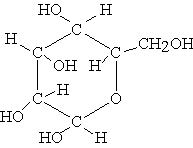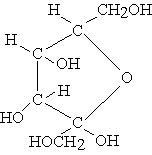 |
 |
| Glucose | Frutose |
|---|---|
 | |
| Sucrose | |
2.3. Fruit flavours
Although certain aromatic spicy fruits (coriander, black pepper, white pepper, pimento berry, ...) have a very high content of aromatic compounds which can be obtain as essential oils, the flavour components of table fruits are present at lower concentrations. So, although one can identify and enjoy the taste and the aroma of a specific fruit, for the flavourists or the perfumers these contents limit the use of concentrates of fruit flavours.
Aromatic components
Carbohydrates
The carbohydrates present in fruits are of considerable importance for their quality and edibility.
These compounds are produced by photosynthesis and those of interest to food and flavour industries are:
| Sugars | Non-sugars (Polysaccharides) | |||||||||||||||
|---|---|---|---|---|---|---|---|---|---|---|---|---|---|---|---|---|
|
| |||||||||||||||
The principal sugars found in fruits are fructose and glucose which are reducing sugars, and sucrose, a non-reducing sugar.
 |
 |
| Glucose | Frutose |
|---|---|
 | |
| Sucrose | |
The amount of sugars and relative proportions present in a fruit depend on its nature and its degree of maturation.
Acids
Some fruits are particularly rich in organic acids either in the free state or combined as esters.
| Aliphatic acids | ||
|---|---|---|
| Monocarboxylic acids | Formic | H COOH |
| Acetic | CH3 COOH | |
| Butyric | CH3 (CH2)2 COOH | |
| Glycolic | HO CH3 COOH | |
| Lactic | CH3 CH(OH) COOH | |
| Glyceric | HO CH2CHOH COOH | |
| Pyruvic | CH3 CO COOH | |
| Glyoxylic | CHO COOH | |
| Dicarboxylic acids | Malonic | HOOC CH2 COOH |
| Adipic | HOOC (CH2)4 COOH | |
| Fumaric | HOOC CH CH COOH | |
| L-Malic | HOOC CH2 CH(OH) COOH | |
| Tartaric | HOOC CH(OH) CH(OH) COOH | |
| Tricarboxylic acids | Citric | HO C(CH2 COOH)2 COOH |
| Carbocyclic acids | ||
 | ||
| Benzoic acid | ||
Amino acids are also present and are essential precursors to many of the biochemical systems in plant metabolism (Rohan, 1970).